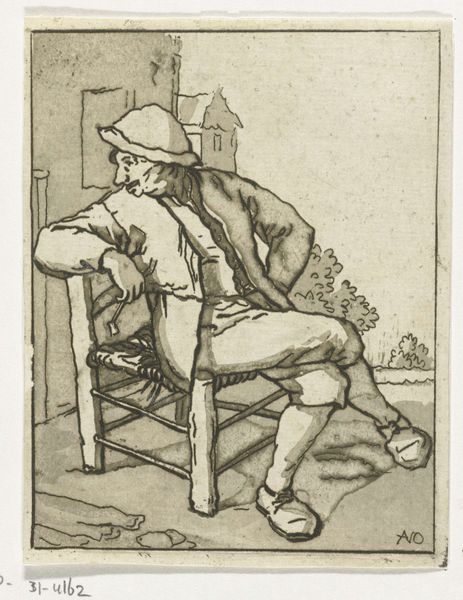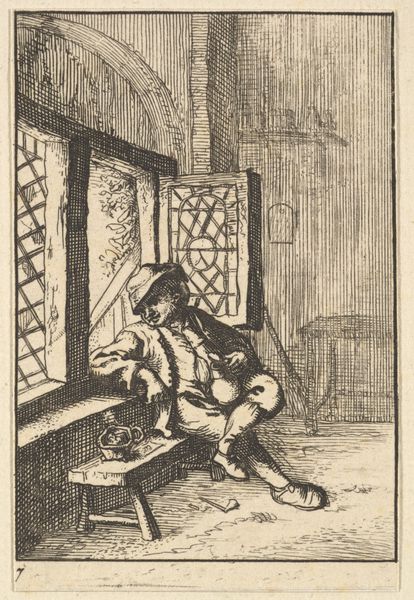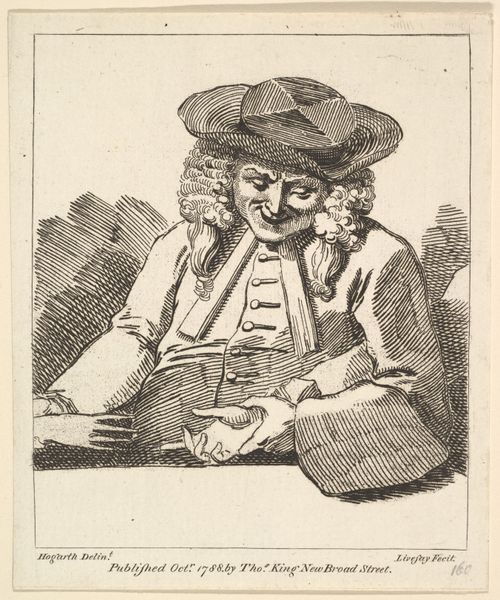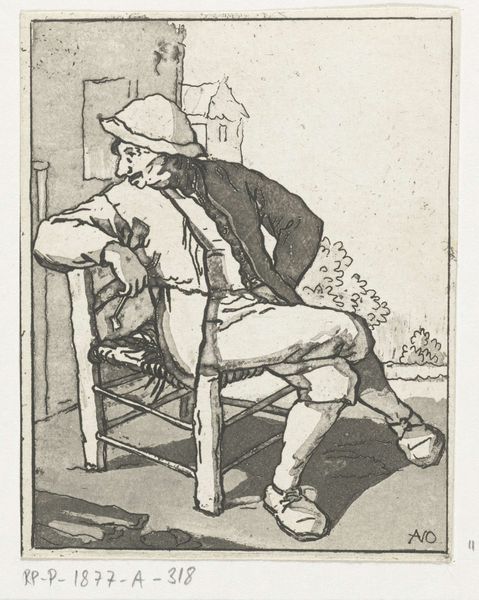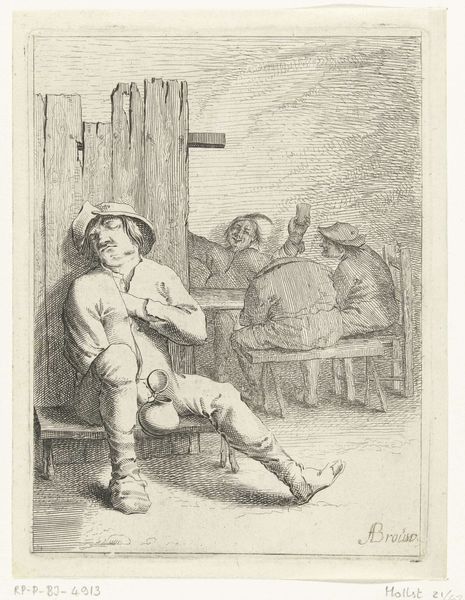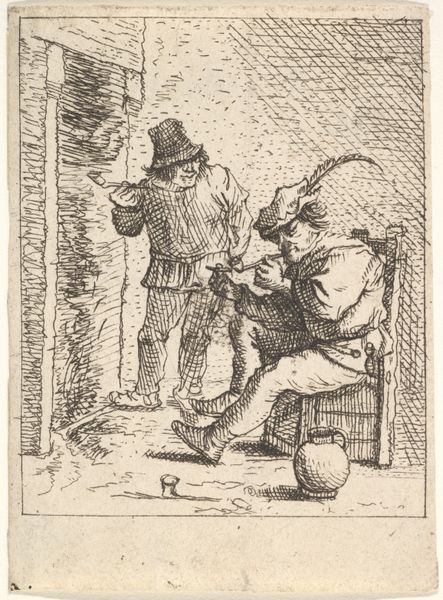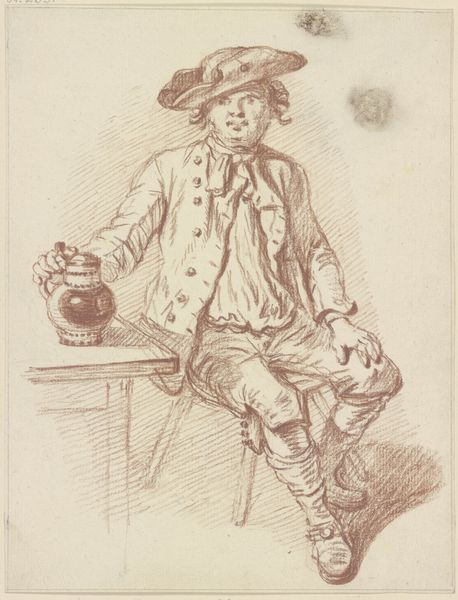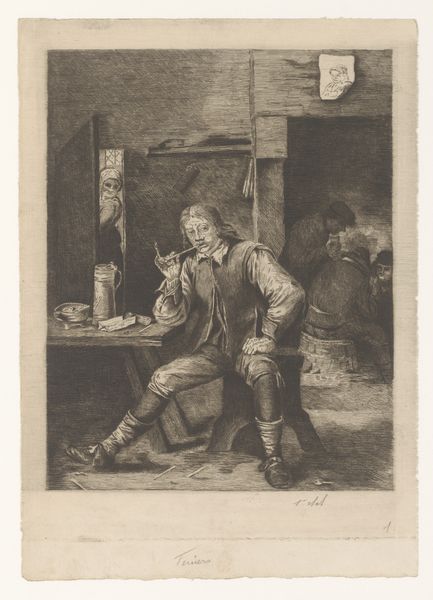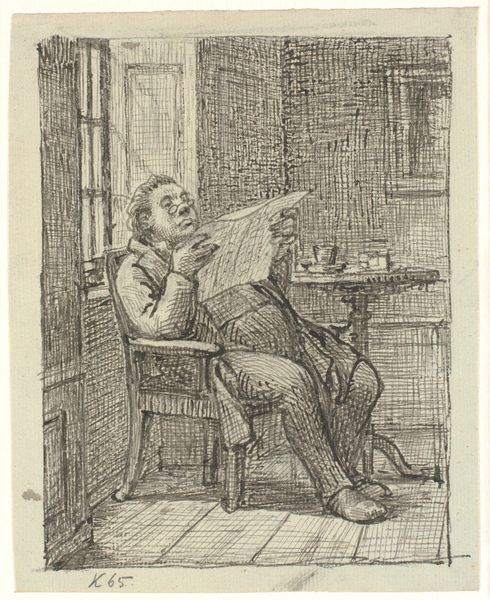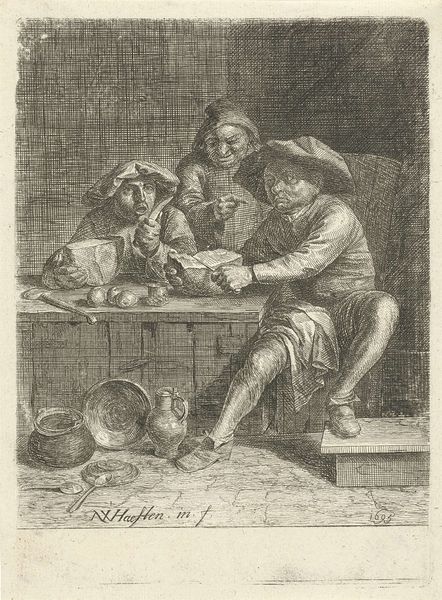
Male peasant smoking a pipe and holding a drinking cup, his left elbow resting on a table, another man seated at the table, a waitress walking through a doorway beyond, after a series of four prints showing peasants by David Teniers the Younger 1625 - 1690
0:00
0:00
drawing, print, ink
#
portrait
#
drawing
#
baroque
#
dutch-golden-age
# print
#
figuration
#
ink
#
genre-painting
Dimensions: Sheet: 3 3/16 x 2 5/16 in. (8.1 x 5.8 cm)
Copyright: Public Domain
Curator: Here we have "Male peasant smoking a pipe and holding a drinking cup, his left elbow resting on a table, another man seated at the table, a waitress walking through a doorway beyond," made by David Teniers the Younger, sometime between 1625 and 1690. Editor: Immediately, I notice the sharp contrast and dense cross-hatching used to render the textures. There is a casual atmosphere that makes me think about labor and leisure, the making and selling of goods. Curator: Exactly! Teniers, working during the Dutch Golden Age, was adept at depicting everyday life. Prints like these were incredibly popular and were disseminated widely, shaping perceptions about social classes and daily life across Europe. The figure isn’t just a peasant; it’s a representation of "peasantry". Editor: I agree, and look at the specific tools here. The clay pipe, the cup... we can analyze these objects to gain better insight into not just this man's work, but this particular social and historical context. Who was smoking these pipes? Where were the raw materials sourced from? It speaks volumes about trade routes, artisanal crafts and economic activities that underpinned this period. Curator: It does highlight the romanticized view of peasant life that became popular among the bourgeoisie during that time. There's a level of implied "authenticity" that speaks to broader political and social trends. The rising merchant class wanted to see this sort of lifestyle preserved, as they built their new urban existence, one so different than what they thought came before. Editor: I think you're spot on. We should consider how art making here wasn't some solitary pursuit, but was a part of a larger market, which can explain these somewhat generic depictions. The material realities and social forces at play give the art object its cultural significance. Curator: Thinking about how these images circulated then and how they influence perceptions today is key to understanding art's broader cultural role. Editor: Agreed. When we look at an artwork, we're looking at the people who labored, the patrons who made it all possible, the vendors that helped spread the artwork, as well as the end result itself. Curator: This gives us a deeper understanding about a piece that would simply be considered genre painting if only at face value. Editor: Indeed. A view into the entire system, so to speak.
Comments
No comments
Be the first to comment and join the conversation on the ultimate creative platform.
